As we continue to unpack face mapping, we’re doing a deep dive about acne on cheeks.
Acne may be less common in this area, but it does happen sometimes, and when it does, it can leave you really confused.
A pimple here? Really?
The cheeks are also one of the primary areas where redness and flaking can show up. Those who struggle with rosacea may hate the way their cheeks flare up when they least want them to.
It’s time to find out how we can keep the cheeks looking plump, healthy, and smooth.
Face Mapping Gives Us Clues as to Our Overall Health
Face mapping comes from the ancient Chinese tradition of “face reading,” in which the face was believed to hold clues as to a person’s personality, health, and fortune. Back before blood tests and imaging scans were available, doctors relied on looking, touching, and seeing what was in front of them to help make a diagnosis.
Today, in the Western world, we’ve adopted the idea that skin problems on the face can give us clues about our health, overall. We now understand that the skin’s condition is not only a reflection of how we care for it, but how we care for our entire bodies. Diet, exercise, and stress relief all play a part in how the skin reacts.
Let’s find out what it means when acne, redness, and other problems show up on your cheeks.
Acne on the Cheeks Linked to the Respiratory System
In general, the cheeks are believed to be linked to the respiratory system, but when you start studying this area, you find a lot of possible connections that could explain skin problems here.
In general, we can think of the cheeks this way:
- Top of the cheek: Right under the eyes—this area is believed to be connected to the kidneys, as well.
- Upper cheeks: The tops of the cheeks, or right where the cheekbones are, are linked to the lungs and sinus areas.
- Lower cheeks: Connected to the teeth and gums.
Some face mapping practitioners also split the cheeks up this way:
- Left cheek: Also connected to the liver.
- Right cheek: More connected to the lungs.
There are a number of potential ways to clear up the skin in this area, but don’t worry, it’s not too difficult to choose from among the many options. We’re going to be looking at not only the things that could be going wrong with your respiratory system, but your liver and even your lifestyle in general.
What is included in the respiratory system?
First, the respiratory system. This is the group of organs and tissues in the body that takes in oxygen and expels carbon dioxide. It includes:
- The lungs
- The sinuses
- The trachea (windpipe)
- The diaphragm, which expands and contracts to help bring air in and force it out
a stressed respiratory system
Stresses to this system can create stress on the cheeks, in the form of acne breakouts, redness, inflammation, and irritation. How is this area stressed? Here are some possibilities:
- Allergies
- Asthma
- Air pollution (indoor or outdoor)
- Smoking
- Lack of exercise and deep breathing
Other Potential Causes of Cheek Acne
If you don’t suffer from allergies, however, you’re not a smoker and you’ve been getting plenty of fresh air, you may need to keep looking for other potential causes of your cheek acne or redness.
If the problem is on your lower cheeks, under the plump area and lining up more with your upper teeth, consider these potential causes:
- Gum disease or gum irritation—are your gums bleeding?
- Tooth pain or irritation
- Tooth sensitivity
- Consuming too much sugar (which can lead to teeth/gum sensitivity)
7 Solutions for Cheek Acne & Redness
If any of the above sounds familiar to you—acne and redness on the cheeks related to allergies, stress, or even tooth pain—we’ve got potential solutions for you.
Try these:
- Breathe clean air: Start with your respiratory system. If you have allergies, try to limit your exposure to your triggers. Avoid going outside during high pollen times, and invest in a quality air filter for your home and office. Consider adding houseplants that help clean the air as well. Dust and vacuum often, change clothes after coming home from the outside, and open windows when pollen levels are down to help ventilate the air.
- Practice good dental hygiene: Regularly brush and floss your teeth, and see your dentist at least once a year. If you have sensitivity, ask about a sensitive toothpaste, and avoid over-whitening your teeth, as whiteners can be abrasive. Cut back on sugary foods.
- Watch out for bacteria: Sometimes, cheek acne is simply a result of exposure to bacteria. This can come from your hands and fingers, your cell phone, and even your pillowcase. Think about everything that touches your face—usually your cheeks get the brunt of the exposure. Clean your phone regularly (antibacterial wipes work great) and use an earpiece when you can. Change pillowcases at least once a week, and resist touching your face.
- Nourish your kidneys: If your pimples and irritation are showing up high on your cheeks, try drinking more water, and eat more healthy, water-filled foods like melons, cucumbers, strawberries, grapefruit, cauliflower, peppers, broccoli, spinach, zucchini, lettuce, celery, radishes, tomatoes, and cabbage.
- De-stress: Especially if you suffer from rosacea or redness on the cheeks, stress could be a factor. Try to adopt a stress-relieving activity you can do on a daily basis. Meditation, walking, yoga, tai chi, deep breathing, journaling, and massage are all good options.
- Cut back on dairy: Some people are sensitive to dairy products, and studies have linked consumption of dairy to acne in some participants. Pimples on the cheeks could be signs that you’re one of those people. Try eliminating dairy for a couple weeks to see if your acne clears up.
- Get regular aerobic exercise: Consistent aerobic exercise maintains optimal lung function. In a 2011 study, for example, researchers reported that aerobic exercise training could help strengthen the muscles of respiration. Exercise also increases your body’s ability to use oxygen efficiently. You don’t have to run a marathon. Just walk quickly and get your heart rate up. After a few weeks of regular exercise, you may find that your cheek pimples go away.
If you would like to learn more on face mapping and the different parts of the face that are connected to different organs in the body, read our other posts:
Face Mapping: An Introduction
Face Mapping: The Digestive System and Your Forehead
Face Mapping: The Liver and Between the Brows
Sources:
NCBI – Effects of Aerobic Exercise on Lung Function in Overweight and Obese Students
AZ Central – What Does Cardio Do for the Lungs?
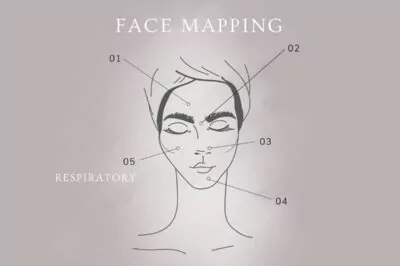


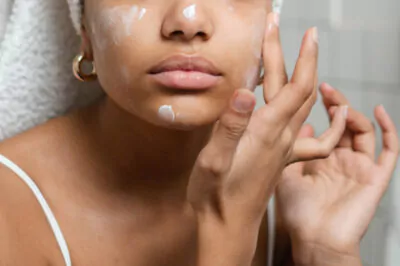

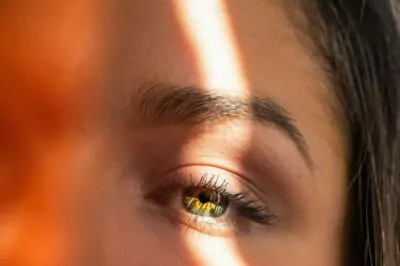
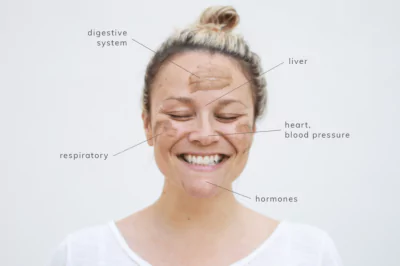
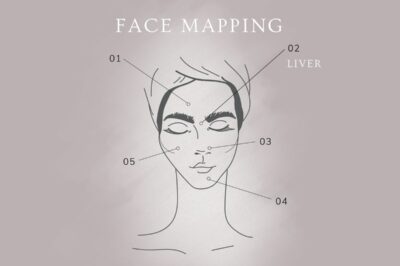

Excellent series of articles. So far the best that I have read.